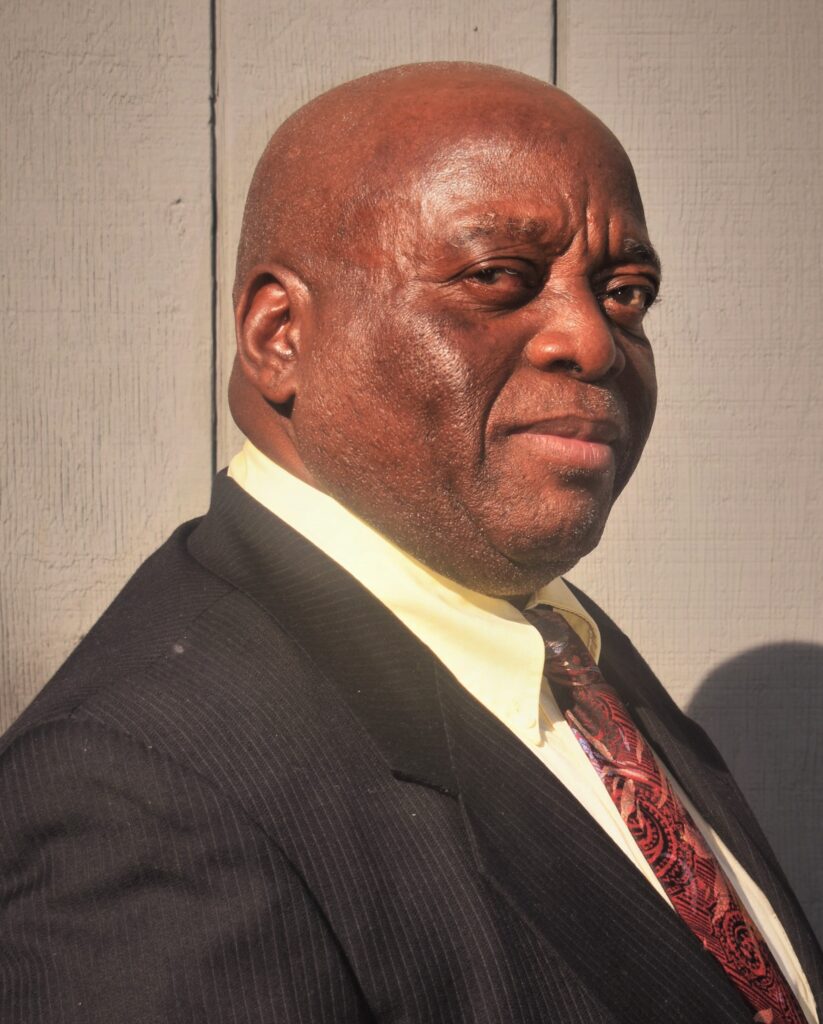by
Mwizenge S. Tembo, Ph. D.
Professor of Sociology
Introduction
This article will first discuss the basic or fundamental principles of African traditional medicine. The ideas are derived from the life of the author who was born and lived in the Zambian village among the Tumbuka in Lundazi in Eastern Province of Zambia from 1954. Second it will disclose in Tumbuka language some of the actual specific names of trees, roots, and methods that are used for treatment of various illnesses among the Tumbuka. This information was obtained when he conducted formal research into Zambian and African traditional treatment of disease among
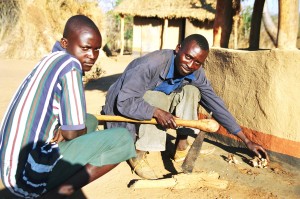
Traditional healer Zebby Tembo after returning from the bush to gather roots prepares them for a patient.
the Tumbuka in 2002. The specific names of the trees, roots, and methods of treatment are very confidential among the traditional healers. The four weeks the researcher spent conducting the research survey was not long enough for the traditional healers or ng’anga to develop the trust that is needed to show an outsider or stranger the trees and roots that are used for treatment of diseases and illnesses. I thank my younger brother Zebby Tembo who took me into the bush. He was 35 years old at the time. He actually showed me the various trees, roots, and what diseases and illnesses they were used for treating and some of the rituals that accompany the treatments.
The broadest conviction that under girds this entire description of Zambian and African traditional medicine is that Africans are the origin all 7 billion humans today. https://en.wikipedia.org/wiki/Recent_African_origin_of_modern_humans
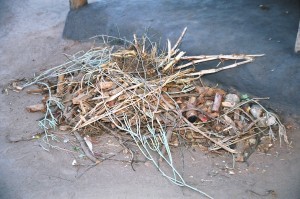
The pile of jumbled roots at a traditional healers’ home or practice. Inspite of the looks, the healer or ng’anga knows all their roots by name and how they are used for treatment of various illnesses.
Since Africans are the homo sapiens that eventually populated the entire world over probably the last one hundred thousand years, virtually all biological genetic characteristics that human exhibit to day might have evolved from the Africans. This impeccable logic simply means most medical practices may have evolved or have been transmitted to peoples from African traditional medicine. Most specifically, fundamental methods of Chinese, Japanese, Indian, Native American and even modern Western medicine may be descendants of or evolved from African traditional medicine. Some of what still exists is described in this

Roots and bark from trees is ground into powder that is used for treatment of diseases and illnesses.
article.
Lastly, it is hoped that by disclosing and describing the trees, roots, and methods of treating diseases, this knowledge will be preserved. Second that today some of these methods have worked and do work in treating various types of illnesses today as you read this article. This is hardly ancient or extinct information and practices. If the reader would like to, they can use some of these methods of treatment, but just as with any other modern Western medical treatment, they have to be supervised by an experienced Zambian or African traditional healer.
Basic Principles of Zambian or African Traditional medicine
The first principle of African traditional treatment of disease it to properly diagnose
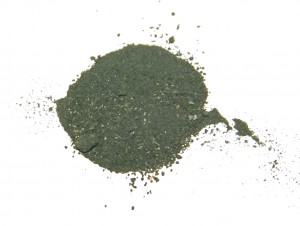
Roots and tree bark may be burned into charcoal that is ground into powder which is used for treatment of diseases and illnesses.
the patient. Second, once the patient has been diagnosed, proper often complex treatment procedures using roots from the bush must be followed which often includes many rituals. The ultimate aim of the Zambian and African traditional treatment is to cure the disease completely so that the patient is completely free of illness for the rest of their lives. It is never an open ended treatment in which the patient has to consult the healer forever and take certain root herbs every day for the rest of their lives. This is the fundamental reason why serious chronic illness require what is called chizimba at the end of a successful treatment of a serious chronic disease so that the illness is banished or sealed away forever. I discuss the role of chizimba here https://hungerforculture.com/?page_id=351
Below is an excerpt from my book: “Satisfying Zambian Hunger for Culture”.
Preparation
Roots and tree bark collected for treatment had to be prepared in a certain way depending on how the patient was going to use them. Fresh roots just brought from

The traditional healer cuts the roots into separate bundles and are tied together. The patient is then given instructions on how to use the roots.
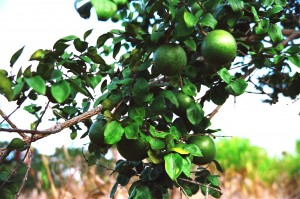
The Kabeza tree is one of the 3 tree roots that are used to treat a woman who experiences severe cramps during her period.
the bush are chopped up into small pieces and usually tied into small bundles with small tree fiber. This is for purposes of identification and convenience when soaking the roots in a small pot, bottle or any container. If the fresh roots are for use as powder they are spread in the sun to dry. When they are dry, they are pounded in a pestle and mortar and sifted into a powder. Your girls before the age of puberty might be the only ones who could pound the roots into powder to be used for treating certain illnesses. It is believed that the active sexual energy of older women and girls past puberty might interfere with the potency of the medicine. If the roots are dried, they can later be soaked in water to use the herb for treating the illness.
Some roots are placed on ambers of fire and burned halfway. At that point the roots are promptly removed and the charcoal is pounded into a pestle and mortar into a black powder.
Fresh leaves are normally pounded into a pestle and mortar into a thick paste. The paste may be soaked in a large container and herbs may be used for bathing as treatment. The paste may also be smeared on a part of the body or skin as treatment for a particular illness.
Types of Treatment
Almost all the treatments of illnesses and diseases may use many or some of multiple methods always accompanied with very simple to complex rituals. There are six major types of treatment which may have different equivalent names among the 72 tribes or ethnic groups in Zambia. When the roots and leaves are brought from the bush, the methods of treatment in Tumbuka, Ngoni, and Chewa include kumwako (to drink), kudyako (to eat) or kumwako bala (to drink porridge), kutema simbo (to make small cuts), kugezako or kusambako ( to bathe),

A traditional healer or ng’anga diagnosing a patient who had chronic pain in his shoulder and arm.
kufukizgha (to steam), and kuvina ( to dance).
Kumwako or to drink means that the patient must soak the roots or tree bark in a container of plain water. The patient may be instructed or required to drink about a cup of the herb often about 3 times a day or in the case of a child or baby a few gulps or sips every few hours. The patient may be required to drink this from ten days up to a month or two. Of course fresh roots may be fetched when the existing ones get weaker or diluted.
Kudyako or to eat, kumwako bala or to drink porridge means the patient must soak the roots or tree bark in a container of plain water. The patient may be instructed or required to use a cup of the herb to cook a thin porridge using mealie-meal which they will drink maybe three times per day. They may also use one cup of the herb to cook a small nshima with maize mealie-meal which the patient may eat twice per day.
Kutema simbo or to make small cuts means that the traditional healer will make one or two tiny cuts on the skin using a clean new or sterile sharp razor blade. These very small cuts on the skin are made on certain locations of the body. Once tiny bits of blood are visible, the healer will get a pinch of the black charcoal roots powder and rub it into the small cuts. Depending on the nature of the illness that the nga’nga or traditional healer is trying to treat, there might be two or three cuts around the temple or sides of the head, on the middle of the forehead between the eyebrows, on the cheeks, on the forearms, behind the hands, on the chest, on the diaphragm, on the stomach, behind the neck, on the legs, feet, and ankles. The cuts
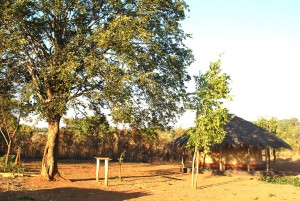
The two trees right behind the author’s hut in the village could be used for treating illness. The tall Msoro tree on the left and smaller Mtowa tree on the right.
may be done on only a few of these parts of the body depending on the illness. Normally the cuts may be done just once, or once per week for 2 to 6 weeks. All of this depends on the illness.
Kugezako, kusambako or to bathe means the roots are soaked in a large container of water. The patient is instructed or required to use the herb to bathe their face or their whole body once per day every day for ten days to a couple weeks.
Kufukizgha or to steaming means that the roots or thick paste of leaves that were pounded in a pestle and mortar are soaked in a large pot or container with a lid on it. The container is placed on the fire and heated to a boil. A large blanket is placed over the patient’s head. While the herbs are still boiling with a top on, it is removed from the fire and placed on the floor. The lid is removed. After about ten seconds, the patient puts their face on top of the steaming herbs and covers their whole head with the blanket. The patient is told to expose their face to the steam, breathe the steam in and out of their lungs, and open their eyes. The kufukizgha or steaming may last up to five or more minutes or until the steam dies down as the boiling

The young girl in the chair (left) is a patient performing the Vimbuza Dance to exorcise spirits that are believed to come from no where.
herbs begin to cool. The patient may be required to do this once a day for about ten days.
Kuvina or to dance as part of the treatment of an illness is never required outside spiritual possession illnesses such a vimbuza and vyanusi among the Tumbuka people of Eastern Zambia and Northern Malawi. The main symptom of the vimbuza illness is that the individual feel as though they are going to lose their mind. The Tumbuka say mtima kumwazghika as if one is going to lose one’s mind. Suddenly their whole body may begin shaking, trembling, and they may shake their head and bob it up down as they holler hysterically, “ hey!, hey! hey!” At this point the nearest people around will hold and restrain them. A ng’anga or traditional healer will be consulted who will recognize the vimbuza spiritual possession. The healer will require the person to dance the vimbuza for him or her to be cured. (Tembo, 2012: 163-165)
| Name of Tree |
Description of Roots/Herbs |
Disease or Illness |
Treatment Procedure |
| Kapuula**
The Ng’anga or Traditional Healer emphasized that the Kapuula roots are a booster that is common or added to the treatment regimen of all illnesses |
Dig and get roots |
Mutu – Heachache |
You soak the roots in water.
· Kumwako: Drink the herb 1 cup 3 times a day.
· Kusumba: The patient can chew the roots and swallow the juice.
· Kutemako: Burn the roots into charcoal. Grind the charcoal into powder. Make 3 tiny cuts or simbo on the side of your head with a clean razor and rub the black charcoal powder into the cuts.
|
| Mpondo |
The tree leaves look like those of the Msekese tree but the Mpondo tree leaves are small however big the tree. Dig and get the roots of the tree. |
Chilaso: Pneumonia |
You soak the roots in water.
· Kumwako: Drink the herb 1 cup 3 times a day.
|
| Msekese |
Dig and get roots |
Chilaso: Pneumonia |
You soak the roots in water.
· Kumwako: Drink the herb 1 cup 3 times a day. |
| Mazaye |
Dig and get roots |
Chilaso: Pneumonia |
You soak the roots in water.
· Kumwako: Drink the herb 1 cup 3 times a day. |
| Msoro |
Dig and get roots |
Chilaso: Pneumonia |
You soak the roots in water.
· Kumwako: Drink the herb 1 cup 3 times a day. |
| Kankhande |
Short trees with small thorns. Dig and get roots. |
Chilaso: Pneumonia |
You soak the roots in water.
· Kumwako: Drink the herb 1 cup 3 times a day. |
| Musutula |
Dig and get roots. |
When a pregnant woman has gone way beyond 9 months and is overdue because someone may have played magic on her. Taking the herb will induce birth shortly. |
You soak the roots in water. Warm the herb in pot. The pregnant woman should drink the warm herb 1 cup 3 times a day. She will give birth shortly. |
| Mukotama, Phuruphuru, and Musindila |
Dig and get roots from all the 3 trees. |
This is for the girl who has been sleeping around or having sex after puberty but before marriage. Mapinga is the complication that is likely to happen to her first pregnancy after marriage. You give her these herbs to prevent her from experiencing dizziness, being blinded by bright objects, white buildings or wufu or white corn or maize meal; some form of white out experience. |
You soak all the roots from the 3 trees in water. This is a combination.
· Kumwako: Drink the herb 1 cup 3 times a day.
· Kugeza: use the herb to wash face once a day.
· Kutemako: Burn the roots from the 3 trees into charcoal. Grind the charcoal into powder. Make 3 tiny cuts or simbo on the forehead of the patient and rub the charcoal powder into the cuts. |
| Mpukupuku |
The tree has long thin fruits. Dig and get roots. |
Treatment for Kamthuta or heart palpitations or abnormally fast heart beats |
You soak the roots in water.
Kumwako bala: You use the herb to cook or boil a thin porridge. Cook and drink this porridge 1 cup 3 times a day. |
| Kapilapila |
Dig and get roots. |
Treatment for Kamthuta or heart palpitations or abnormally fast heart beats |
You soak the roots in water.
· Kumwako bala: You use the herb to cook or boil a thin porridge. Cook and drink this porridge 1 cup 3 times a day.
· Chizimba or sealing the disease or illness away forever. Kill a lizard and dina kumasinda. Get the heart of the lizard and burn it together with the roots of the tree. Pound or grind the 2 together in a charcoal powder. Make 3 tiny cuts or simbo with a clean sharp razor on the left below breast where the heart or kamthuta or heart palpitations are happening. Rub the black charcoal powder in the cuts. |
| Mphatwe |
Scrape off the bark of the tree from the side that is facing the sunrise. |
Treatment for Pamtima or Diarrhea. |
You soak the roots in water.
· Kumwako: Drink the herb 1 cup 3 times a Day.
· Warm the herb and pour it into a large container. The naked patient should sit in it to soak the anus or chinyero. |
| Ngobe |
Scrape off the bark of the tree which has long thorns. |
Treatment for Pamtima or Diarrhea. |
You soak the roots in water.
· Kumwako: Drink the herb 1 cup 3 times a Day.
· Warm the herb and pour it into a large container. The naked patient should sit in it to soak the anus or chinyero. |
| Kamphoni |
Scrape off the bark of the tree. |
Treatment for very severe or serious Pamtima or Diarrhea. |
You soak the roots in water.
· Kumwako: Drink the herb 1 cup 3 times a Day.
· Warm the herb and pour it into a large container. The naked patient should sit in it to soak the anus or chinyero. |
| 1. Mphalavidwaba (the roots of this tree create mphovu or suds)
2. Mphyoka
3. Nthumbuzgha
4. Msindila
5. Rumburwe
6. Soyo (Payekha or a lone one)
7. Changwe
8. Mukotama |
Dig and get roots from all the 8 trees. |
Treatment chikhoso Ca Mdulo or cough. This very bad sounding cough is believed to be caused when:
· a wife or husband has sex outside marriage. When next the couple has sex the partner who did not have sex outside marriage can experience it this cough.
· When unmarried girls after puberty have sex and continue to cook and serve food in the household. Adults and even children and especially babies may experience cikhoso camdulo or cough. |
You soak the roots from all the 8 trees mixed together in water in a container.
· Kumwako: Drink the herb 1 cup 3 times a day.
· Kumwako bala: You use the herb to cook or boil a thin porridge. Cook and drink this porridge 1 cup 3 times a day.
|
| Phuruphuru |
Dig and get roots. |
For treatment of Mapinga. This is when a pregnant woman’s baby’s head in the womb is facing away from the bottom of the birth canal. The medicine will move the baby’s head to face down. |
Soak the roots in water.
· Kumwako: Drink the herb 1 cup 3 times a day.
· Kumwako bala: You use the herb to cook or boil a thin porridge. Cook and drink this porridge 1 cup 3 times a day.
|
| Kambulunje
Kankhulukuru
Mkanda Njobvu. |
All 3 are fruit trees whose fruits people eat. Dig and get roots from all the 3 trees. |
This is for a young girl who has reached puberty. The herb helps her to stabilize her emotions and personality. |
You soak the roots from all the 3 trees mixed together in water in a container.
Special Conditions**: The mixing of the herbs and cooking of the porridge must be done by a married woman from a sexually reliable couple that have a stable home. The couple is always at home.
The container of the soaking herbs is placed on the spot where the couple had sexual intercourse.
· Kumwako bala: The trusted woman will get the herb and cook a thin porridge for the young girl to drink 1 cup 3 times a day.
· Kumwako: Drink the herb 1 cup 3 times a day. |
| Rumburwe |
Use not recorded |
Use not recorded |
Use not recorded |
| Kabeza
Mkorankhanga
Damati |
Dig and get roots from all the 3 trees. |
For treatment of Khubaza. When a woman experiences severe cramps and pain before each period and during the period. When she is married and tries to get pregnant; she gets a period instead. |
Soak the roots in water.
· Kumwako: Drink the herb when the period starts 1 cup 3 times a day.
· Kumwako bala: You use the herb to cook or boil a thin porridge. Cook and drink this porridge when the period starts 1 cup 3 times a day.
|
| Mpumba
Mtowa |
Scrape the bark from each tree. Do not mix the barks. Dry them and grind them into powder separately. |
For treatment of a cancerous growth or sore on the skin. |
· First, get the mtowa powder and put it on the cancerous growth or sore.
· Second, sprinkle the sore the mpumba powder. Afterwards, the sore will ooze white stuff and heal. Then the sore will be gone. |
| Kambulunje
Kapwalapwala |
Scrape the bark off both trees. You could also get twigs from both trees. You burn the bark together into charcoal. Grind them into powder and add some salt. |
For treating a baby when she or he is sick and has sores all over his or her mouth. |
· Sprinkle the black charcoal powder into the baby’s mouth. |
| Chifitye
Mulungalunga
Phwiripwijo
Kapuula** |
Dig and get roots from all the 4 trees. |
For treatment of Mnthumbo kuphya; when the stomach feels hot or inflamed. |
Soak the roots in water.
· Kumwako: Drink the herb 1 cup 3 times a day.
· Kumwako bala: You use the herb to cook or boil a thin porridge. Cook and drink this porridge 1 cup 3 times a day. |
| Sokolowe |
Dig and get roots. The tree bears fruits that people eat. |
When a mother is 2 to 3 months pregnant and has a child who was weaned. The child cries and whines a lot. The child acts really spoiled and is very clingy to the mother. |
Soak the roots in water.
Use the herbs to cook nshima. Serve the nshima to the child while the child is sitting with siblings and the child’s friends on the chitenje cloth the mother uses for carrying the baby on the back. This cloth is called nguwo. Semen among the Tumbuka, Chewa and Ngoni is also called nguwo. They will all eat the nshima together. After that the child will no longer cry and whine unnecessarily and being bothersome. The child will enjoy playing with siblings and friends all day. |
| Msoro |
Scrape the bark off the tree. You burn the bark into charcoal and grind it into powder. |
For treating a child who is burnt by hot water or fire. |
Get the charcoal power and sprinkle it on the burn sores. The sores will heal. |
| 1. Muwuluka
2. Chibvumulo
3. Maophe
4. Mpapadende
5. Khoswe
6. Musambafumu |
Scrape the barks from all the 6 trees from the side that faces the sunrise. Put all the barks in a large pot and soak them in water. You boil the contents (kubwatuska) for about 20 minutes. |
· Treatment for chest congestion.
· Helps to relieve asthma.
· If people hate you this helps neutralize the hate.
· Helps to prevent people from doing bad things to you. |
· You remove the boiling pot from the fire without taking off the lid. You rush into the house. Put the pot on the floor. Cover a blanket over your head and place your head and face on the closed lid of the hot pot. When ready open the lid, let the steam hit your face and breathe the steam in and out into your lungs. This is called kufukizgha. You do this for 15 to 20 minutes; opening your eyes and sometimes coughing.
· You use the herb to wash the whole body. |
| Mkalakate |
Dig and get roots. |
Treatment for a woman who has delivered but experiences pain in the stomach. This illness is called ciwulazi. |
Soak the roots in water.
· Kumwako: Drink the herb when the herb 1 cup 3 times a day.
· Kumwako bala: You use the herb to cook or boil a thin porridge. Cook and drink this porridge 1 cup 3 times a day.
|
| Mpyoka |
Use not recorded |
Use not recorded |
Use not recorded |
| Mzakaka |
Scrape the bark off of the tree. Grind it into powder and mix the powder with tobacco snuff. |
Treatment for a toothache or jino. |
Place the mzakaka and tobacco snuff mixture on to a fresh tree leaf. And some drops of water. Put a few drops into the patient’s nose on the side of the nose where there is a toothache or jino. |
| Changwe |
Use not recorded |
Use not recorded |
Use not recorded |
| Kamemena Mbuzi |
Treatment of disease unknown |
Treatment of disease unknown |
Treatment of disease unknown |
| Mukatama
Mulilila or Mphakasa |
Dig and get the roots. Scrape off bark from the roots. Grind the bark until it is very smooth. You mix is a tiny pinch of salt. |
Treatment wofunya chimdima or to remove shyness for girls. |
· Get some of the mixture and put it in a bottle which has oil that you rub on your face.
· Add some of the mixture into bath water. |
| Katope
Makochezi |
· Dig and get the roots of the Katope tree
· Makochezi are left over in a stream when the water flows through it. Get some of the left over weeds.
· Mix the makochezi and the roots of the katope tree. Burn them together into charcoal and grind them into powder. |
Treatment wofunya chimdima or to remove shyness for girls. |
· Put some of the charcoal powder into the girl’s bathing water. |
| 1. Mphangala (Vipa so Vya) fruits of the tree
2. Chiyere
3. Chimwemwe |
Get the fruit of the mphangala tree, dig and get roots of the Chiyere and Chimwemwe trees. Grind all the 3 together until they are smooth. |
Treatment wofunya chimdima or to remove shyness for girls. |
· Kutemako: Make 2 tiny cuts or simbo on the the girl’s forehead with a clean razor and rub the smooth mixture into the cuts.
|
| Chigulo |
Dig and get the roots |
Treatment for bola-bola Sexually Transmitted Disease (STD) for men. |
Soak the roots in water.
· Kumwako: Drink the herb 1 cup 3 times a day.
· Kumwako bala: You use the herb to cook or boil a thin porridge. Cook and drink this porridge 1 cup 3 times a day.
Everything will come out of the man’s private parts including white puss. The patient will be cured of the STD.
|
Conclusion
This article first, discussed the basic or fundamental principles of African traditional medicine. Second, it disclosed in Tumbuka language some of the actual specific names of trees, roots, and methods that are used for treatment of various illnesses among the Tumbuka. This information was obtained when the author conducted formal research into Zambian and African traditional treatment of disease among the Tumbuka in 2002. The specific names of the trees, roots, and methods of treatment are very confidential among the traditional healers. Because the researcher only spent about four weeks conducting the research survey, the period was not long enough for him to develop the bond and trust the traditional healers or ng’anga he interviewed to show him some of the trees that are used for treating diseases and illnesses.
